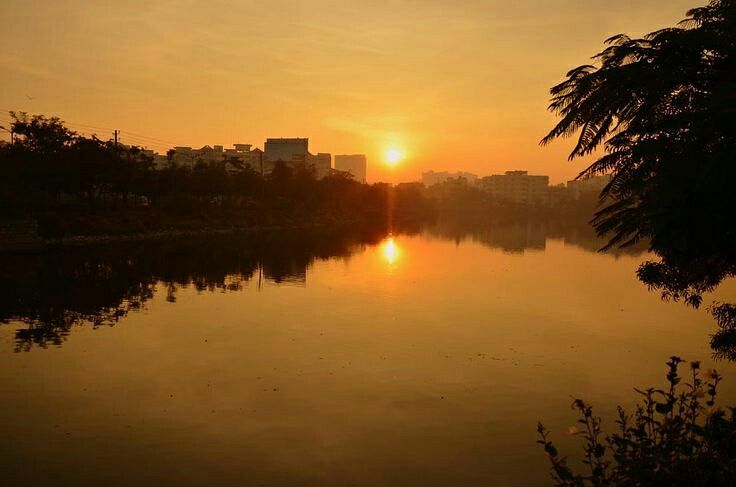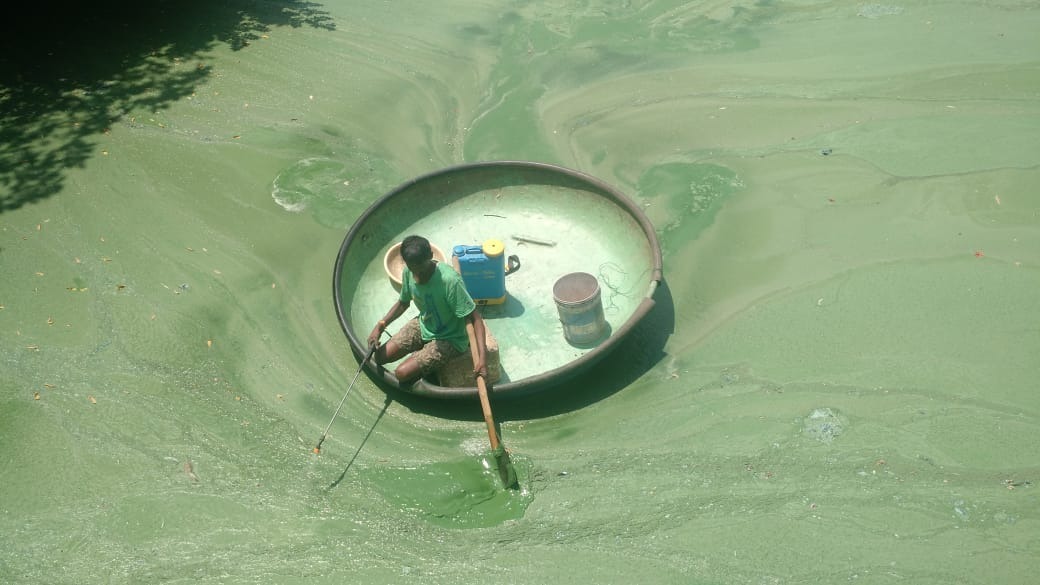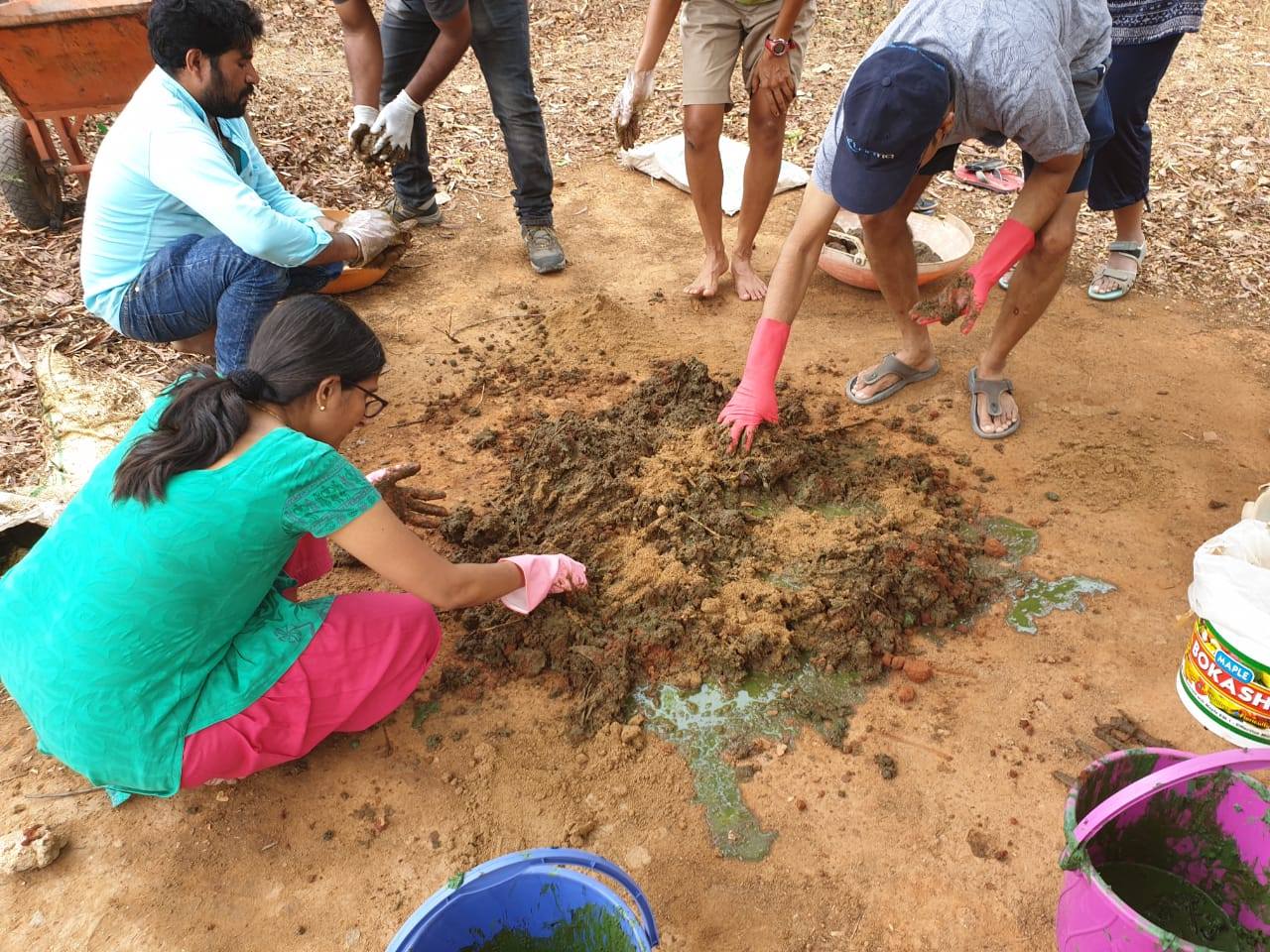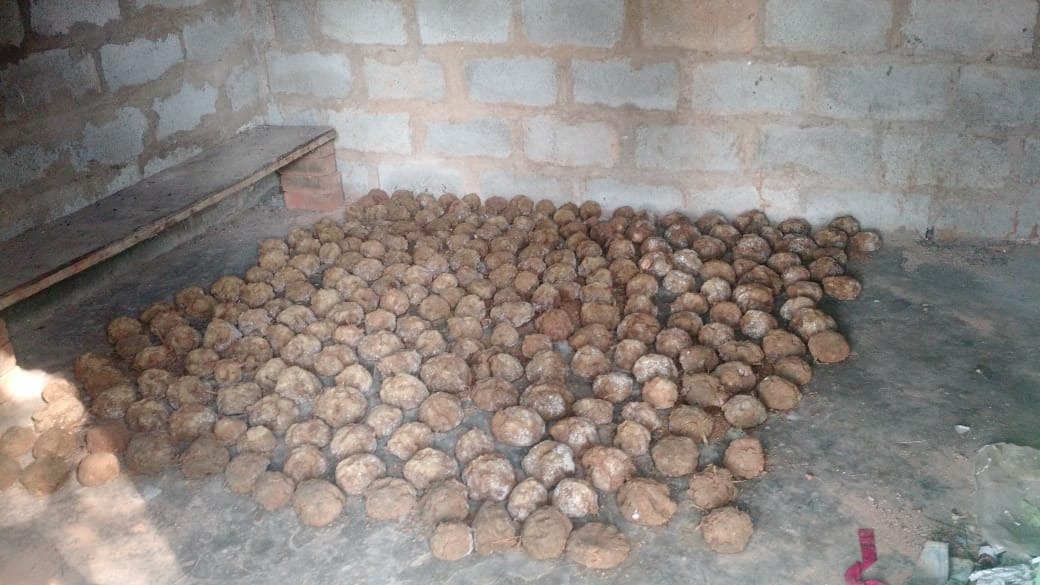Bokashi Balls & Jaggery: B’luru Residents Use Unique Japanese Idea to Clean Lake!
Did you know Bokashi is quite an efficient way to deal with your kitchen waste, including dairy and meat scraps? It is also less smellier than vermicomposting — a feature smartly used by these citizens!

Spread across 48 acres, the Kaikondrahalli lake in Bengaluru faces a constant battle against the perils of overbearing urbanisation.
Although the lake rejuvenation process began a decade ago, steering it away from the perils of garbage, sewage, and industrial waste dumping is an everyday challenge.
Carrying the burden of maintaining this lake is the Bruhat Bengaluru Mahanagara Palike (BBMP), the city’s municipal authority, and the Mahadevpura Parisara Samrakshane Mattu Abhivrudhi Samiti (MAPSAS), a citizens group that works to revive lakes.
Besides Kaikondrahalli, the BBMP and MAPSAS also manage three other lakes in the city—Kasavanahalli Lake, Saul Kere Lake, and Chikka Ambalipura Lake.
Nearly three weeks ago, residents living in the vicinity of the Kaikondrahalli lake began complaining about a putrid stench coming out of the water.
On further investigation, MAPSAS members found out that there was a major inflow of sewage near the inlet of the stormwater drain (Raja Kaluve) from a nearby private property.
The diversion drain that goes around the lake, however, was blocked. As a result, there was a backflow of that sewage water into the lake.
Another consequence of this backflow of sewage water into the lake was an algae bloom, which releases a noxious odour. Such was the effect of this sewage in-flow that even the nearby wells began to stink.
“We called the BBMP and asked them to do something about it. They cleared the drain and blocked the manholes which arrested the stench for a while. But the sewage water that had spilled into the lake still had to be cleaned.
Also, the algae bloom releases toxins that contaminate drinking water, causing illnesses for animals and humans,” says a senior volunteer from MAPSAS, speaking to The Better India.

“Initially, the BBMP did send some workers to clear the scum off the surface of the water. However, we were looking at other possibilities as well. For starters, we employed an effective microorganisms (EM) solution, which we had used once before. They eat algae, promote the growth of more microorganisms that eat the sludge, and this enhances the water clearing process. As it clears, the sunlight is also able to pass through,” they add.
To acquire the EM solution, MAPSAS contacted Kiran C Kulkarni, a bioremediation expert. After diluting the solution a little bit, the next step was to spray it into the water.

“But we couldn’t get sprayers from the local municipal authorities, and even the nearby fire station did not have any spares. Finally, we used our own garden sprayers and borrowed spraying cans from the local fishermen. Within 30 minutes of pouring the diluted solution into the water, there was a considerable reduction in the stench, but this was not a permanent fix,” informs the volunteer.
Last weekend, MAPSAS volunteers found a better solution in the form of Bokashi (a Japanese term that means ‘fermented organic matter’) Balls.
This is a system developed in Japan that uses beneficial microorganisms to break down toxins and food waste. Kiran Kulkarni is assisting MAPSAS in creating the recipe.
Also Read: Techie Revives B’luru Lake in Just 45 Days! You Can Join Him & TBI to Save More Lakes
This ball is made mixing bokashi powder (husk and sawdust) with red soil, cow dung, sludge from the bottom of the lake and EM solution, which among other things contains molasses (jaggery). According to MAPSAS, jaggery acts as food for the microorganisms (that eat up the sludge) to grow.
Did you know that Bokashi is also quite an efficient way to deal with your kitchen waste, including dairy and meat scraps? It is also less smellier than vermicomposting.

The mixture is formed into large balls and left to ferment for a week until a fuzzy white fungus coating appears. The appearance of this coating means that the Bokashi Balls have been activated for water purification.
The balls are then dropped into the lake, where the microorganisms will eat all the sludge present in the lake, keeping it clean.


“We made balls and left them to be activated. This Saturday, we will again call the volunteers. By this time, the white fungus on top should appear, and that’s when we know these balls have been activated. Once it’s activated, we throw these balls into the water. Apparently, the same process has been applied in the cleaning of the Ulsoor and Bellandur lake, while authorities are trying to do the same in cleaning water bodies like the Hussain Sagar Lake in Hyderabad,” says the volunteer.
Speaking to The Better India, Priya Ramasubban, a Founding Trustee of MAPSAS, who has since resigned and now sits in an advisory position, says, “Our lakes and our commons have always had a history of community involvement. If we leave it to some salaried government employee to do all that needs to be done we’ll be left wanting because there is little accountability and efficiency. Moreover, these employees are already burdened with too much on their plates. So, those living in the city HAVE to take an active interest in protecting our resources. We can’t just sit back and expect things to work Our systems are not that robust yet.”
Whether this works or not in Kaikondrahalli lake remains to be seen. However, what we cannot deny is that residents care and have gone out of their way to find a unique solution to a persistent problem that afflicts this city.
You can contact MAPSAS here.
(Edited by Gayatri Mishra)
Like this story? Or have something to share? Write to us: [email protected], or connect with us on Facebook and Twitter.
This story made me
- 97
- 121
- 89
- 167
Tell Us More
We bring stories straight from the heart of India, to inspire millions and create a wave of impact. Our positive movement is growing bigger everyday, and we would love for you to join it.
Please contribute whatever you can, every little penny helps our team in bringing you more stories that support dreams and spread hope.



















